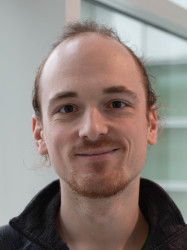Summary
Dr. Baynham works at the forefront of quantum technologies and the techniques of precision optical measurement to address outstanding questions in fundamental physics and harness the incredible precision of atomic sensors in settings beyond the laboratory. The exquisitite sensitivity of these devices has opened a new frontier in our understanding of the universe - precision atomic sensors can probe physics beyond the standard model at sensitivities unreachable even by the world's largest particle colliders. At Imperial, Baynham co-leads the Ultracold Strontium Laboratory, creating squeezed states of matter for the Imperial-led AION project, and building continuous ultracold atom sources in the USOC project.
Before joining Imperial in 2020, Dr. Baynham worked for six years at the UK's National Physical Laboratory building optical atomic clocks - the most precise quantum sensors in existence. Here he pioneered new techniques in quantum control to improve the accuracy of the NPL ytterbium-171 optical clock by an order of magnitude and worked with consortia of national metrology institutes to operate these clocks in international networks and place new limits on variation of fundamental constants - measurements that improved constraints on ultralight dark matter and physics beyond the standard model.
Since joining Imperial, Baynham has begun a collaboration with Dr. Richard Hobson, founding and operating the Ultracold Strontium Laboratory. Together they have launched the Ultra-precise Shock-resistant Optical Clocks (USOC) project which uses meta-stable states of strontium to prepare a continuous stream of ultracold atoms and to use these atoms to realise a zero-deadtime atomic clock. These advances will bring dual advantages of a step-change in clock precision as well as relaxing constraints on the most difficult to miniaturise component in at atomic clock - the ultrastable optical cavity. He hopes to use this technology to bring the world's best clocks into the field, one day using them to detect seismic activity that could save lives.
In parallel, Baynham plays a leading role in the AION collaboration where he aims to perform long-baseline atom interferometry with resolution beyond the standard quantum limit and to use this in the search for ultralight dark matter and mid-band gravitational waves. To reach the demanding levels of precision required by AION, Baynham focusses on the preparation of squeezed states of matter to circumvent the standard quantum limit in reading out the interferometer's phase. It is his dream that these signals will one day spot black holes from millions of light years away, and teach us about the universe's most early moments, with the potential to transform our understanding of physics.
Publications
Journals
Pasatembou E, Baynham CFA, Buchmüller O, et al., 2024, Progress toward ultra-cold Sr for the AION project-A red MOT and an optical-heterodyne diagnostic tool for injection-locked laser diodes, Avs Quantum Science, Vol:6
Sherrill N, Parsons AO, Baynham CFA, et al., 2023, Analysis of atomic-clock data to constrain variations of fundamental constants, New Journal of Physics, Vol:25, ISSN:1367-2630
Alonso I, Alpigiani C, Altschul B, et al., 2022, Cold atoms in space: community workshop summary and proposed road-map, Epj Quantum Technology, Vol:9, ISSN:2662-4400
Schioppo M, Kronjager J, Silva A, et al., 2022, Comparing ultrastable lasers at 7 x 10<SUP>-17</SUP> fractional frequency instability through a 2220 km optical fibre network, Nature Communications, Vol:13
Hobson R, Bowden W, Vianello A, et al., 2020, A strontium optical lattice clock with 1 x 10<SUP>-17</SUP> uncertainty and measurement of its absolute frequency, Metrologia, Vol:57, ISSN:0026-1394

